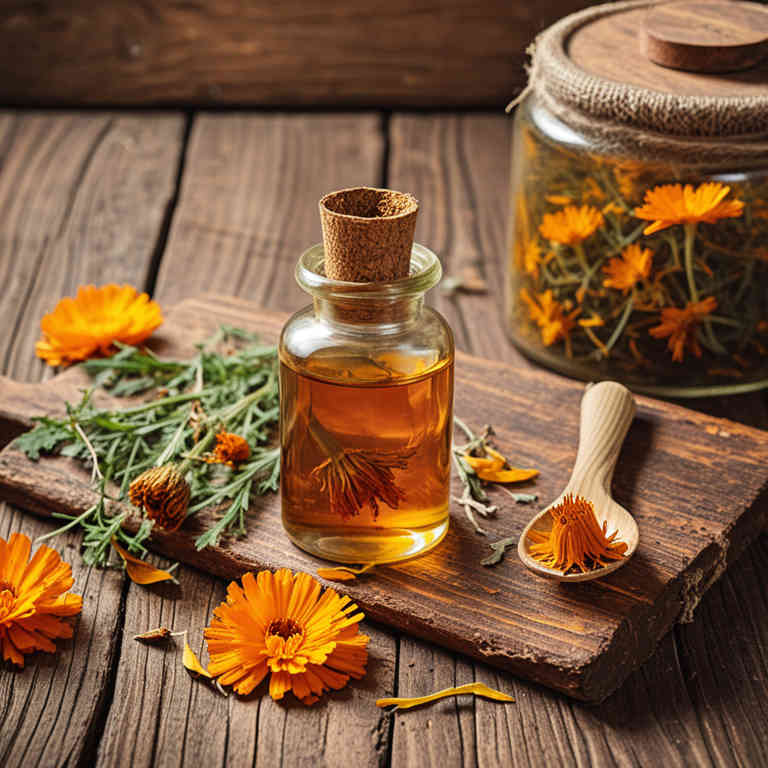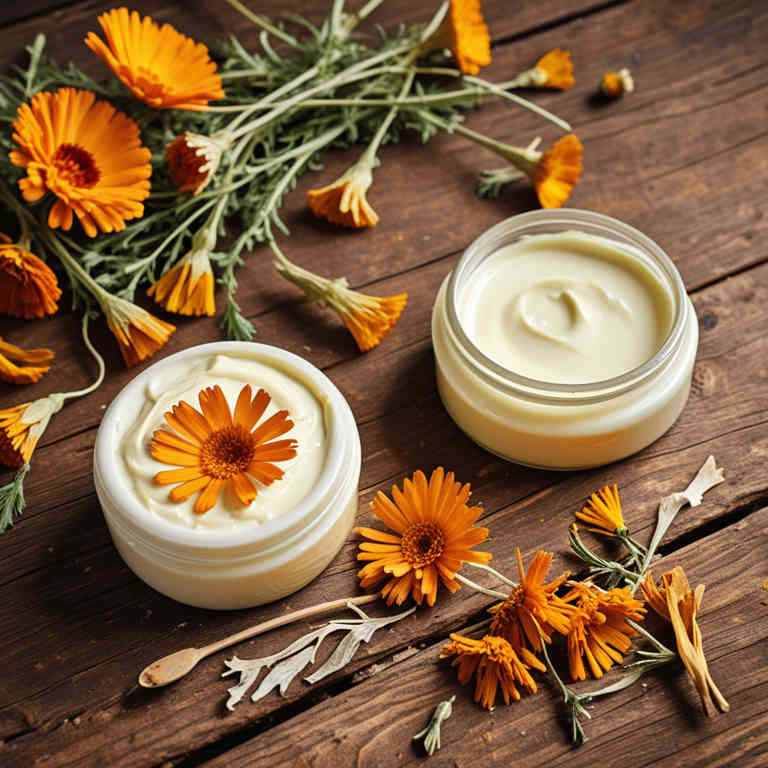10 Best Calendula Officinalis Preparations

The best medicinal preparations of Calendula officinalis are teas, decoctions, tinctures, baths, and oils, each offering unique therapeutic benefits.
Calendula tea is often used to soothe digestive issues and promote relaxation.
Decoctions involve simmering the dried flowers to extract more potent compounds, useful for skin conditions.
Tinctures provide a concentrated form of the herb, commonly used for topical applications.
Calendula baths can help alleviate skin irritations and inflammation, while infused oils are widely used in skincare and healing salves.
Below there's a list of the 10 best herbal preparations of calendula officinalis for medicinal purposes.
1. Teas
Calendula officinalis teas is commonly used to treat skin conditions, digestive issues, and inflammation.
This herbal preparation is often employed for ailments such as eczema, psoriasis, gastrointestinal discomfort, and minor wounds. The bioactive constituents responsible for its medicinal properties include flavonoids, triterpenes, carotenoids, and essential oils. These compounds possess anti-inflammatory, antimicrobial, and antioxidant effects.
Calendula tea is also believed to support immune function and promote wound healing.

2. Decoctions
Calendula officinalis decoctions is commonly used to treat a variety of skin conditions, digestive issues, and inflammatory disorders.
These decoctions are often employed for ailments such as eczema, psoriasis, gastritis, and minor wounds due to their anti-inflammatory and antimicrobial properties. The bioactive constituents responsible for these effects include flavonoids, triterpenes, carotenoids, and essential oils, which contribute to the plant's healing and soothing actions. Additionally, calendula decoctions may support immune function and reduce oxidative stress in the body.
This herbal preparation has been traditionally used in both European and Ayurvedic medicine for its broad therapeutic benefits.

3. Tinctures
Calendula officinalis tinctures is commonly used to treat skin irritations, wounds, and inflammatory conditions due to their antiseptic and anti-inflammatory properties.
These tinctures are often applied topically to address eczema, psoriasis, and minor burns. They are also used to soothe digestive issues and reduce inflammation in the gastrointestinal tract. The bioactive constituents responsible for these effects include flavonoids, triterpenoids, and carotenoids, which have antioxidant, anti-inflammatory, and antimicrobial properties.
Additionally, the presence of sesquiterpene lactones contributes to its wound-healing and immune-modulating effects.

4. Baths
Calendula officinalis baths is commonly used to soothe skin irritations, reduce inflammation, and promote wound healing.
This herbal preparation is often employed to treat conditions such as eczema, psoriasis, minor burns, and insect bites. The anti-inflammatory, antimicrobial, and antifungal properties of calendula make it effective for various dermatological issues. The bioactive constituents include flavonoids, triterpenes, and carotenoids, which contribute to its therapeutic effects.
Additionally, it contains essential oils and polysaccharides that enhance skin regeneration and provide a calming effect.

5. Oils
Calendula officinalis oils is commonly used to treat skin conditions, inflammation, and wounds due to their soothing and healing properties.
These oils are frequently applied topically to alleviate symptoms of eczema, psoriasis, and minor burns. They are also used to reduce swelling and irritation in the digestive tract, often in the form of suppositories. The medicinal effects of calendula oils are attributed to compounds such as flavonoids, triterpenes, and carotenoids, which possess anti-inflammatory, antimicrobial, and antioxidant activities.
Additionally, they may help in improving circulation and promoting tissue regeneration.

7. Creams
Calendula officinalis creams is commonly used to treat skin conditions such as eczema, psoriasis, and minor burns.
These creams are also applied to soothe insect bites, reduce inflammation, and promote wound healing. The most common medicinal uses include alleviating dermatitis, preventing infections, and reducing redness and irritation. The bioactive constituents responsible for these effects include flavonoids, triterpenoids, and carotenoids, which possess anti-inflammatory, antimicrobial, and antioxidant properties.
These compounds work together to support skin health and enhance the body’s natural healing processes.

8. Mucillages
Calendula officinalis mucillages is commonly used to soothe inflammation and promote healing in various skin conditions.
This herbal preparation is widely recognized for its ability to treat ailments such as eczema, psoriasis, and minor burns. The mucillages, which are gel-like substances, form a protective barrier on the skin and help retain moisture. The bioactive constituents responsible for its medicinal properties include flavonoids, triterpenes, and carotenoids, which possess anti-inflammatory, antimicrobial, and antioxidant effects.
These compounds work synergistically to reduce redness, irritation, and promote tissue repair.

9. Capsules
Calendula officinalis capsules is commonly used to treat a variety of skin conditions, digestive issues, and inflammatory disorders.
They are frequently employed for their anti-inflammatory, antimicrobial, and wound-healing properties. Common ailments addressed include eczema, psoriasis, gastritis, and minor cuts or burns. The bioactive constituents responsible for these effects include flavonoids, triterpenes, and carotenoids, which possess antioxidant and anti-inflammatory activities.
Additionally, the presence of sesquiterpene lactones contributes to its antimicrobial and immunomodulatory effects.

10. Oinments
Calendula officinalis oinments is commonly used to treat skin irritations, wounds, and inflammatory conditions.
They are often applied topically to reduce redness, itching, and inflammation. The most common medicinal uses include soothing eczema, psoriasis, and minor burns. Calendula oinments are also used for treating diaper rash and minor cuts.
The bioactive constituents responsible for these effects include flavonoids, triterpenoids, and carotenoids, which have anti-inflammatory, antimicrobial, and wound-healing properties.
